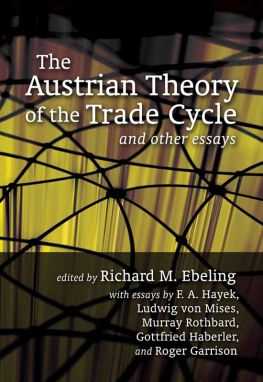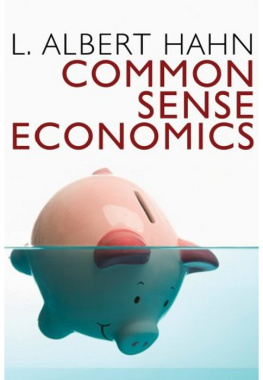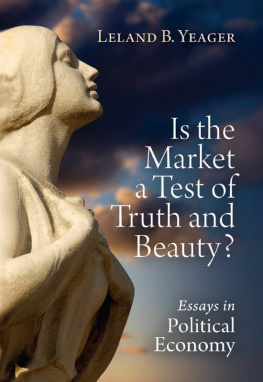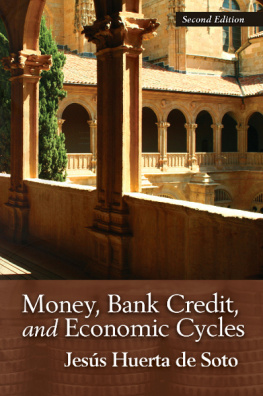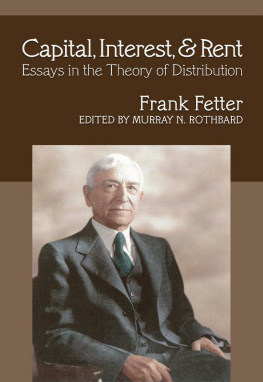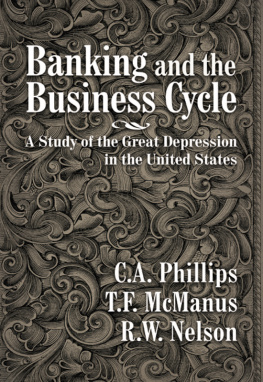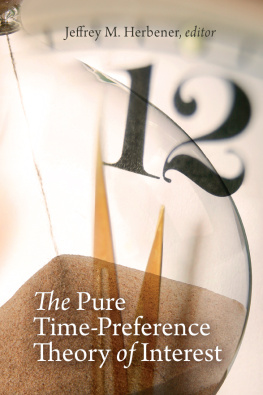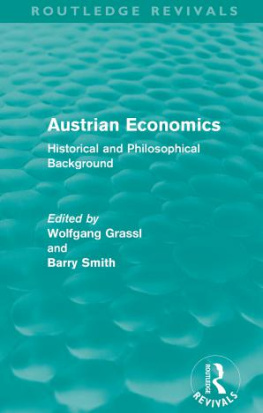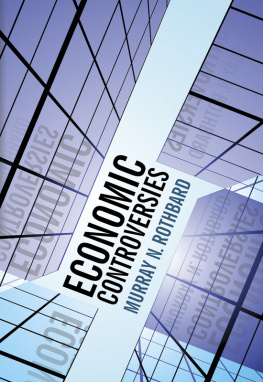THE AUSTRIAN THEORY
OF THE
TRADE CYCLE
AND OTHER ESSAYS
LUDWIG VON MISES
GOTTFRIED HABERLER
MURRAY N. ROTHBARD
FRIEDRICH A. HAYEK
COMPILED BY RICHARD M. EBELING
WITH AN INTRODUCTION AND SUMMARY
BY ROGER W. GARRISON
 | LUDWIG VON MISES INSTITUTE
AUBURN, ALABAMA 36849-5301 |

Dedicated to the memory of O. P. Alford, III, champion of liberty and the Austrian School

Copyright 1996 by the Ludwig von Mises Institute.
Originally published by the Center for Libertarian Studies (1978).
All rights reserved. Written permission must be secured from the publisher to use or reproduce any part of this book, except for brief quotations in critical reviews or articles.
Published by the Ludwig von Mises Institute, Auburn, Alabama 36849-5301.
Library of Congress Catalog Card Number: 96-075695
ISBN: 0-945466-21-8
Contents
Roger W. Garrison
Ludwig von Mises
Gottfried Haberler
Murray N. Rothbard
Friedrich A. Hayek
Roger W. Garrison
Introduction:
The Austrian Theory in Perspective
Roger W. Garrison
T he four essays in this volume, each written by a major figure in the Austrian school of economics, set out and apply a distinctive theory of the business cycle. The span of years (19321970) over which they appeared saw a dramatic waxing and then waning of the prominenceboth inside and outside the economics professionof the Austrian theory. Gottfried Haberler wrote in his 1932 essay that the theory is not so well known in this country as it deserves to be (pp. 44). Although Ludwig von Mises offered no assessment in this regard in his essay, he remarked in 1943 about the effect of the theorys general acceptance on the actual course of the cycle. Anticipating a key insight in the modern literature on rational expectations, Mises wrote, The teachings of the monetary theory of the trade cycle are today so well known even outside the circle of economists that the naive optimism which inspired the entrepreneurs in the boom Then, in 1969, Murray N. Rothbard could writewithout serious overstatementthat a correct theory of depressions and of the business cycle does exist, even though it is universally neglected in present-day economics (p. 74).
What happened over the span of nearly forty years to account for the rise and fall of this theory of boom and bust? The simple answer, of course, is: the Keynesian revolution. John Maynard Keyness General Theory of Employment, Interest, and Money, which made its appearance in 1936, produced a major change in the way that economists deal with macro-economic issues. A close look at some pre-Keynesian ideas can show why the Austrian theory was so easily lost in the aftermath of the Keynesian revolution; a brief survey of the alternatives offered by modern macroeconomics will show why there is a new-found interest in this old Austrian theory.
First introduced by Mises in his Theory of Money and Credit (1912), the theory was originally billed as the circulation credit theory rather than as a uniquely Austrian theory. Mises was very much aware of its multinational roots. The notion that the market process can be systematically affected by a divergence between the bank rate of interest and the natural rate came from Swedish economist Knut Wicksell; the understanding that the process so affected would have a self-reversing quality to it (Mises used the term counter-movements in his earliest exposition) came from the British currency school, whose analysis featured international gold flows. The uniquely Austrian element in Misess formulation is the capital theory introduced by Carl Menger and developed by Eugen von Bhm-Bawerk. Mises showed that an artificially low rate of interest, maintained by credit expansion, misallocates capital, making the production process too time-consuming in relation to the temporal pattern of consumer demand. As time eventually reveals the discrepancy, markets for both capital goods and consumer goods react to undo the misallocation. The initial misallocation and eventual reallocation constitute the microeconomic foundations that underlie the observed macroeconomic phenomenon of boom and bust. Misess theory was superior to its Swedish forerunner in that Wicksell was concerned almost exclusively with the effect of credit expansion on the general level of prices. It was superior to its British forerunner in that the currency schools theory applied only when monetary expansion in one country outpaced that of its trading partners. Misess theory was applicable even to a closed economy and to a world economy in which all countries are experiencing a credit expansion.
The theory took on a more predominantly Austrian character in the hands of F. A. Hayek. In the late 1920s and early 1930s, Hayek gave emphasis to the Austrian vision of Hayek focused the analysis clearly on the relationship between the roundaboutness of the production process and the value of the corresponding output. The Hayekian triangles keep track of both time and money as goods-in-process make their way through the temporally sequenced stages of production. His notion of a linear production process is highly abstract and overly simple in the light of a fuller accounting of the fixed and circulating capital that actually characterize a capital-using economy However, these triangles feature an essential but often neglected dimensionthe time dimensionin the account of boom and bust. Alternative theories, in which consumption and investment appear as two coexisting aggregates, can be seen as even more simplisticto the point of being wholly inadequate for analyzing the boom-bust sequence.
Haberler concludes his essay with an expression of concern about the complexity of the Austrian theory, which he saw as a serious disadvantage (p. 64). But the complexity, in his judgment, is inherent in the subject matter and hence is not a fault of the theory. Complexity is evident in the two early essays (1936 and 1932) in their organization and style of argument. Both Mises and Haberler defend the theory against its critics and deal with various misunderstandings. Mises, for instance, identifies Irving Fishers inflation premium, which attaches itself to the rate of interest as prices in general rise, only to say that this is not what he is talking about. He is discussing, instead, still another aspect of interest-rate dynamics. The real rate of interest rises at the end of the boom to reflect the increasing scarcity of circulating capital, after excessive amounts of capital have been committed to the early stages of production processes (p. 31). Haberler takes great pains to refocus the readers attention away from the general price level and toward the relative prices that govern the vertical structure of production (p. 49). He distinguishes between absolute deflation and relative deflation, and between primary and fundamental phenomena that characterize the downturn and secondary and accidental phenomena that may also be observed. All these complexitiesplus still others involving such notions as the natural rate of interest and the corresponding degree of roundaboutness of the production processare unavoidable in a theory that features an intertemporal capital structure. The theoretical richness that stems from the attention to capital has as its negative counterpart the expositional difficulties and scope for misunderstanding.

